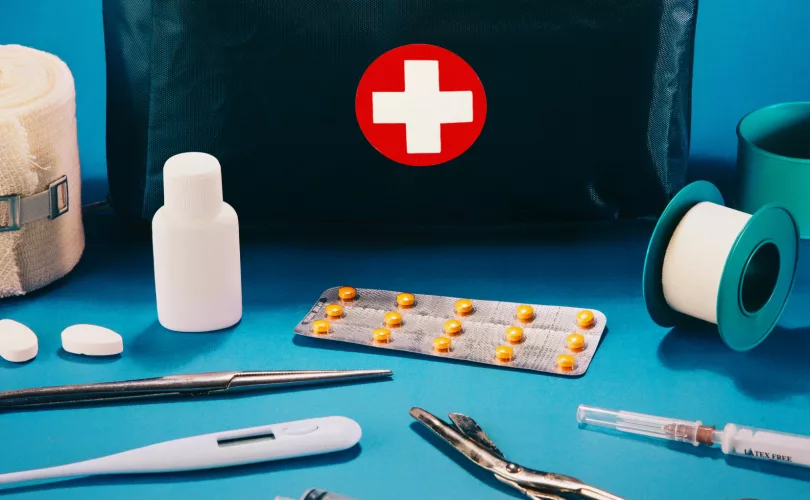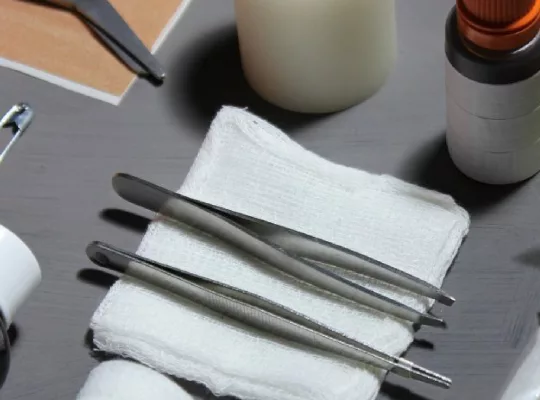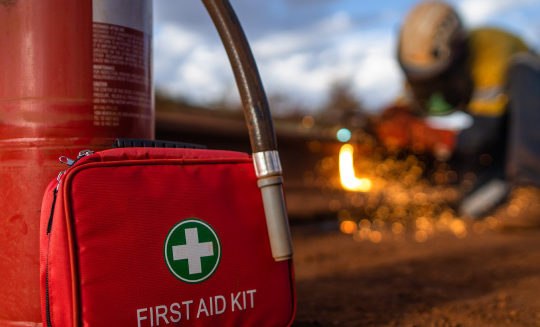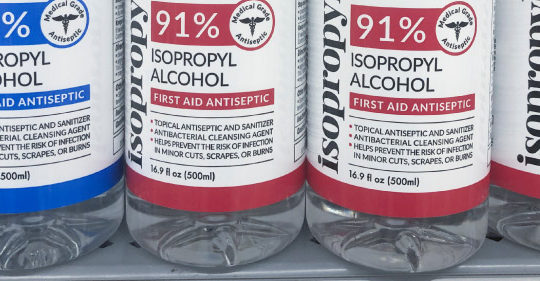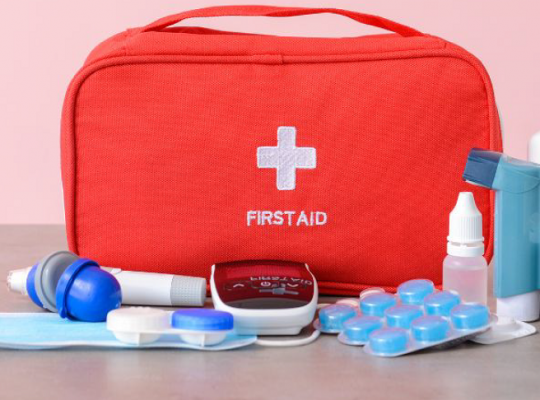As a leading manufacturer of first aid kits for over 25 years, we know that choosing the right first aid kit can be overwhelming. Whether you’re looking for a basic home kit or a fully stocked industrial first aid station, understanding what should be in a first aid kit is crucial.
In this guide, we’ll break down the essential supplies found in different types of first aid kits, compare industry-grade kits with Red Cross recommendations, and help you determine which kit is right for your needs.
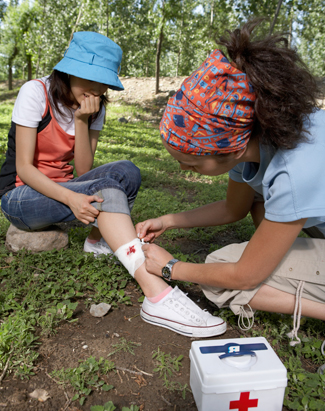
The Essential 20 Items in All First Aid Kits
No matter the size or purpose of a first aid kit, certain supplies are always necessary. Below is a list of the 20 most common items found in first aid kits of all sizes.
| Adhesive Bandages | Gauze Pads | Combine Pads | Eye Pads |
|---|---|---|---|
| Antiseptic Wipes | Antimicrobial Wipes | Triple Antibiotic Ointment | Burn Cream/Gel |
| Cold Pack (Instant) | Triangular Bandage | Elastic Bandage | Adhesive Tape |
| CPR Mask | Nitrile Gloves | Scissors | Tweezers |
| First Aid Guide | Rescue Blanket | Eyewash Solution | Pain Relief Medications |
These items serve as the foundation of any well-stocked first aid kit, providing treatment for cuts, burns, eye injuries, sprains, and other common medical issues.
Comparing First Aid Kits: Home vs. Industrial Use
The supplies needed in a home first aid kit differ significantly from those required for industrial settings. The Red Cross recommends a standard list of items suitable for a family of four, while our industrial first aid kits are designed for workplaces, construction sites, and factories where injuries may be more severe.
To help you understand what to expect in different types of first aid kits, we’ve created the table below comparing Red Cross recommendations with our 25-Person, 50-Person, and 100-Person First Aid Kits.
| Item | Red Cross Recommendation | 25-Person Kit | 50-Person Kit | 100-Person Kit |
| Adhesive Bandages | 25 Assorted | 60 Assorted | 50 (Fabric) | 200 (Assorted) |
| Large Bandages (2″ x 3″) | – | 4 Plastic | – | 5 |
| Knuckle Bandages | – | – | – | 5 Woven |
| Fingertip Bandages | – | – | – | 5 Woven |
| Gauze Pads (3″ x 3″) | 5 | 4 | 12 | 8 |
| Gauze Pads (4″ x 4″) | 5 | 4 | – | – |
| Combine Pads (5″ x 9″) | 2 | 1 | 2 | 4 |
| Eye Pads | – | 4 | 3 | 16 |
| Antiseptic Towelettes | 5 | 10 BZK | 25 | 50 |
| Triple Antibiotic Ointment | 5 Packets | 8 Packets | 20 Packets | 50 Packets |
| Burn Cream/Burn Gel | – | 4 Packets | 20 Packets | 50 Packets |
| Cold Pack (Instant) | 1 | 1 (5″ x 6″) | 2 (5″ x 5.5″) | 4 (5″ x 7″) |
| Triangular Bandage | 2 | 1 | 2 | 2 |
| Elastic Bandage | – | 1 (3″ x 5yds) | – | – |
| Adhesive Tape | 1 Roll (10 yds x 1 in) | 1 (1/2″ x 10 yds) | 1 (1/2″ x 5 yds) | 4 Rolls (1/2″ x 2.5 yds) |
| CPR Mask | 1 Breathing Barrier | – | 1 | 2 |
| Nitrile Gloves | 2 Pairs (Large, Nonlatex) | 2 Pairs | 4 Pairs | 4 Pairs |
| Scissors | – | 1 Lister | 1 | 1 |
| Tweezers | 1 | 1 | 1 (3.5″) | 1 |
| First Aid Guide | Emergency First Aid Instructions | 1 | 1 | 1 |
| Rescue Blanket | 1 | – | – | 2 |
Our industrial first aid kits contain supplies tailored for workplace safety, including more bandages, gauze, burn treatment, and CPR masks to handle a wider range of injuries.
How to Maintain Your First Aid Kit
To ensure your first aid kit is always ready when you need it:
✔ Check supplies regularly – Ensure nothing is expired or missing. ✔ Restock after use – Replenish bandages, ointments, and medications immediately. ✔ Store properly – Keep in a dry, accessible place. ✔ Customize for your needs – Add personal medications and emergency contacts.
Final Thoughts: Choosing the Right First Aid Kit
Understanding what should be in a first aid kit is essential for being prepared in any situation. Whether you need a home emergency kit or a Emergency Survival Kit, knowing what supplies to expect ensures you’re equipped to handle injuries effectively.
Looking for a high-quality first aid kit? Explore our expertly crafted 25-person, 50-person, and 100-person kits designed to meet industry standards and workplace safety regulations.
Stay safe and be prepared! 🚑
This post is part of our First Aid Kit Series, covering topics such as: ✔️ Maintaining your first aid kits ✔️ How to Build Your Own First Aid Kit ✔️ what Medications Should be in First Aid Kits?
Check out our other posts for more first aid insights!

